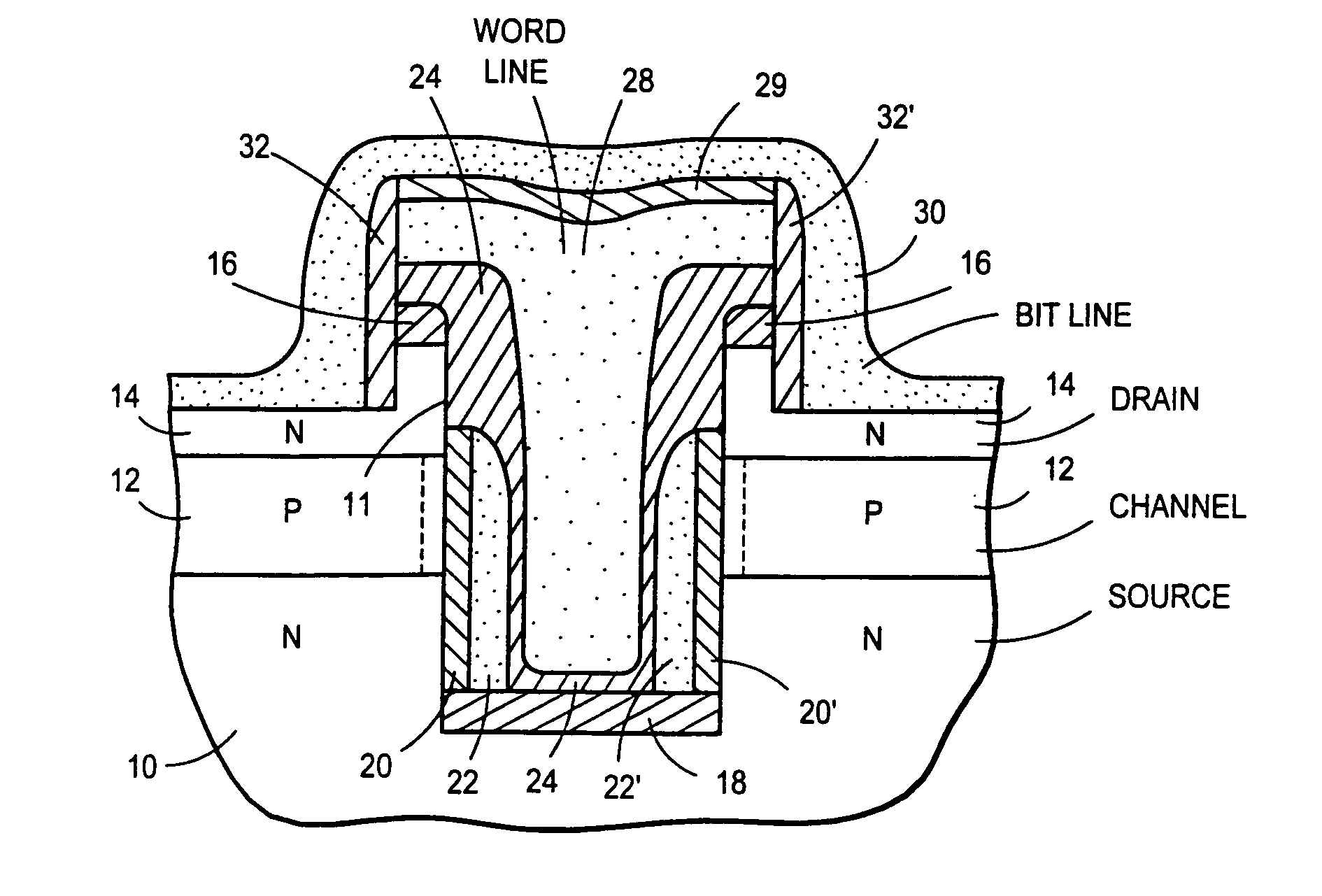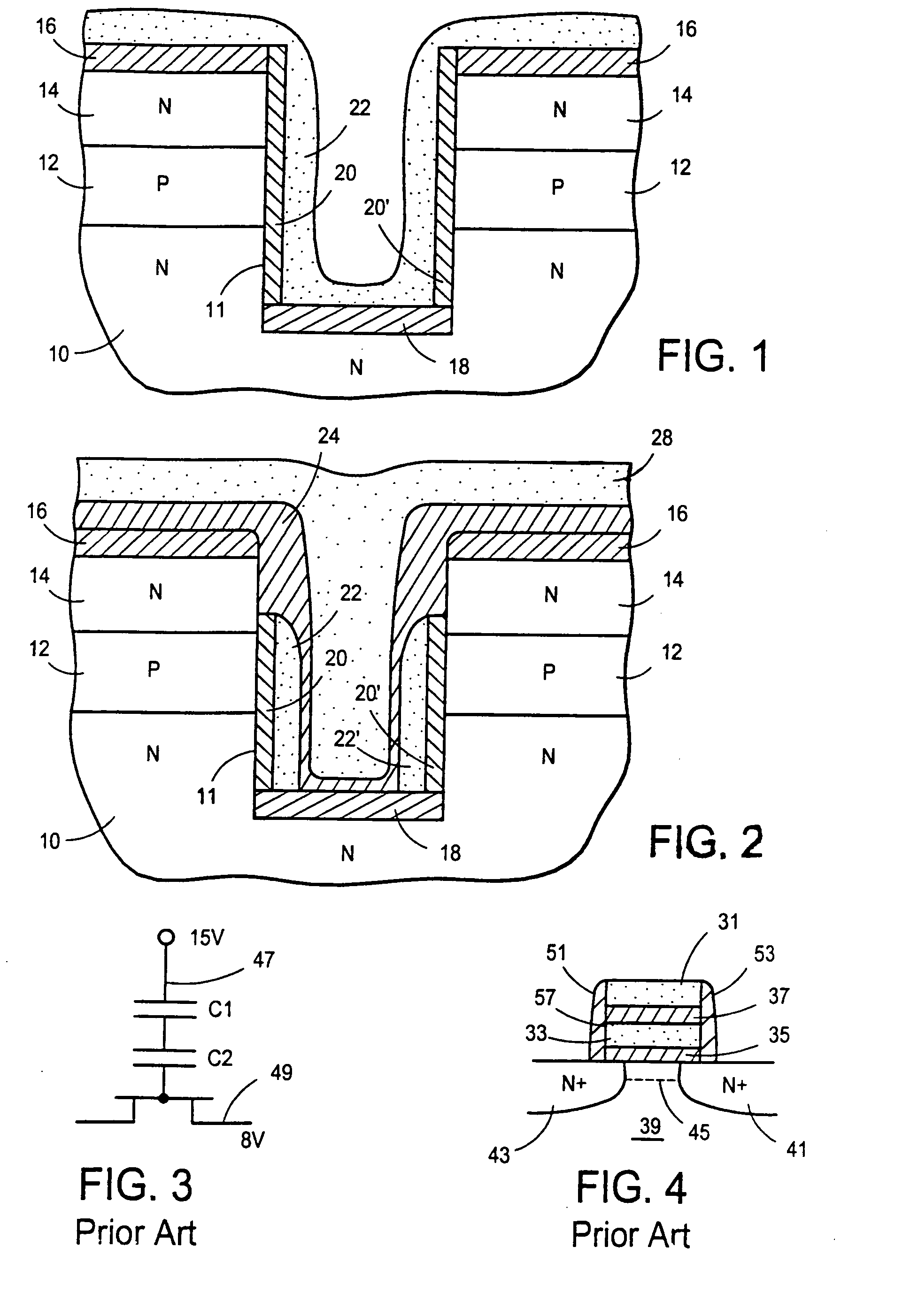Vertically integrated flash EPROM for greater density and lower cost
a technology of vertical integration and flash eprom, which is applied in the direction of electrical equipment, semiconductor devices, radio frequency controlled devices, etc., can solve the problems of becoming much more difficult to precisely control the gate length with photolithography, and achieve the elimination of tolerances, large cell area savings, and improved coupling ratio
- Summary
- Abstract
- Description
- Claims
- Application Information
AI Technical Summary
Benefits of technology
Problems solved by technology
Method used
Image
Examples
third alternative embodiment
of Vertical Flash EPROM
[0142] Another embodiment of this invention is shown in FIGS. 57A, B, C and D. These figures represent the third alternative embodiment of the vertical flash EPROM cell. This embodiment has the improved coupling ratio (approximately 50% for all feature sizes) advantage from deeper field oxide, and has a cell area of 2F squared for all feature sizes.
[0143]FIG. 57A is the top view of an EPROM transistor cell. FIG. 57B is the section along AA′ of FIG. 57A. FIG. 57. C is section along BB′ of FIG. 57A. A recess 5701 is formed in P Silicon 82. The bottom of the recess has an oxide layer 5703. A buried N+ layer 5704 is formed by ion implantation below oxide layer 5703. N+ Layer 5204 is the source of the vertically oriented EPROM transistor and also functions as a first bit-line that connects the sources of all the vertical EPROM transistors in a column of an array.
[0144] Recess 5701 has four side surfaces 164, 165, 166 and 167 in the preferred embodiment, but any o...
PUM
 Login to View More
Login to View More Abstract
Description
Claims
Application Information
 Login to View More
Login to View More - R&D
- Intellectual Property
- Life Sciences
- Materials
- Tech Scout
- Unparalleled Data Quality
- Higher Quality Content
- 60% Fewer Hallucinations
Browse by: Latest US Patents, China's latest patents, Technical Efficacy Thesaurus, Application Domain, Technology Topic, Popular Technical Reports.
© 2025 PatSnap. All rights reserved.Legal|Privacy policy|Modern Slavery Act Transparency Statement|Sitemap|About US| Contact US: help@patsnap.com



